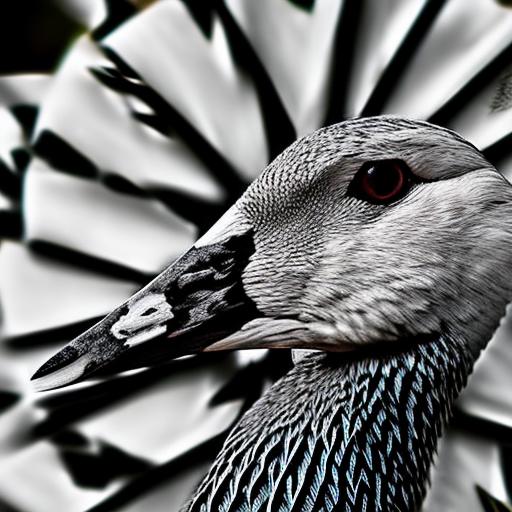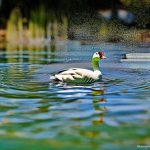Geese have become an increasing problem in urban areas, causing damage to property, creating unsightly messes, and posing potential health risks. As the population of geese continues to grow, it is crucial to find humane and effective methods of goose control. One method that has gained popularity in recent years is the use of pinwheels as a deterrent for geese. Pinwheels are not only visually appealing but also create auditory stimuli that disrupt geese behavior and deter them from nesting or feeding in a particular area.
Key Takeaways
- Pinwheels are a popular and effective method for deterring geese from certain areas.
- Understanding the behavior and habits of geese is important in determining where to place pinwheels.
- Pinwheels work by creating a visual distraction that scares geese away.
- Benefits of using pinwheels include their affordability, ease of use, and non-harmful nature.
- Different types of pinwheels are available in the market, including those with reflective surfaces or noise-making features.
Understanding the behavior and habits of geese
To effectively control geese, it is essential to understand their behavior and habits. Geese are attracted to certain areas for several reasons. They are drawn to open spaces near water sources, such as ponds or lakes, where they can find food and nesting sites. Geese are also social animals and tend to congregate in areas where they feel safe and can find companionship.
Geese have specific nesting and feeding habits that need to be taken into account when implementing goose control measures. They typically nest on the ground near water, constructing nests out of grass and other vegetation. Geese are herbivores and feed on grass, grains, and other plant material. They graze on lawns and fields, often causing damage to vegetation.
How pinwheels work as a deterrent for geese
Pinwheels work as a deterrent for geese by creating visual and auditory stimuli that disrupt their behavior. The spinning motion of the pinwheels catches the attention of geese, making them wary of the area. The reflective surfaces of the pinwheels also create flashes of light that further deter geese.
In addition to the visual stimuli, pinwheels can also create auditory stimuli that deter geese. Some pinwheels are designed with bells or other noise-making devices that produce sounds when the wind blows. These sounds can startle geese and make them uncomfortable, discouraging them from staying in the area.
There have been numerous successful installations of pinwheels as a goose deterrent. For example, in a park in a suburban neighborhood, pinwheels were placed strategically around a pond where geese had been causing problems. The pinwheels not only deterred the geese from nesting in the area but also prevented them from feeding on the grass surrounding the pond.
Benefits of using pinwheels over other methods of goose control
Pinwheels offer several advantages over other methods of goose control. Compared to chemical repellents, pinwheels are non-toxic and do not pose any health risks to humans, pets, or other wildlife. They are also more environmentally friendly as they do not introduce harmful chemicals into the ecosystem.
Pinwheels are also cost-effective and easy to install. They can be purchased at a relatively low cost and can be installed by anyone without the need for professional assistance. Pinwheels are also portable and can be moved to different areas as needed.
Types of pinwheels available in the market
There are various types of pinwheels available in the market, each with its own unique features and designs. Pinwheels can be made from different materials such as plastic, metal, or wood. The size of the pinwheel can also vary, with larger pinwheels creating more visual impact.
When choosing a pinwheel, it is important to consider the specific situation and needs. For example, if wind is a concern, it is advisable to choose a pinwheel with a sturdy construction that can withstand strong winds. Additionally, some pinwheels come with additional features such as reflective tape or bells that enhance their effectiveness as a deterrent.
Factors to consider when placing pinwheels to keep geese away

Proper placement of pinwheels is crucial for maximum effectiveness. When placing pinwheels, it is important to consider factors such as wind direction, sunlight, and proximity to water sources. Pinwheels should be placed in areas where they will catch the wind and spin freely. They should also be positioned in areas that receive adequate sunlight to create reflective flashes.
Proximity to water sources is also important as geese are attracted to areas near water. Placing pinwheels near ponds or lakes can help deter geese from nesting or feeding in those areas. It is also advisable to place pinwheels in areas where geese have been causing problems, such as lawns or fields.
Tips for maintaining and maximizing the effectiveness of pinwheels
To ensure the effectiveness of pinwheels, regular cleaning and maintenance are necessary. Pinwheels can accumulate dirt and debris over time, which can reduce their visual impact. Cleaning pinwheels with soap and water can help maintain their appearance and effectiveness.
Enhancing the visual and auditory stimuli of pinwheels can also maximize their effectiveness. Adding reflective tape or bells to pinwheels can increase their deterrent effect on geese. Reflective tape creates additional flashes of light, while bells produce more auditory stimuli that can startle geese.
Possible limitations and drawbacks of using pinwheels for goose control
While pinwheels can be an effective deterrent for geese, there are some limitations and drawbacks to consider. Pinwheels may not be as effective in windy conditions as they rely on wind power to spin and create visual impact. In areas with consistently strong winds, alternative methods may need to be considered.
Additionally, geese that have become habituated to human presence may not be deterred by pinwheels alone. In such cases, it may be necessary to combine pinwheels with other deterrent methods or implement a comprehensive goose management program.
Combining pinwheels with other methods for more effective goose management
Pinwheels can be used in conjunction with other methods for more effective goose management. Habitat modification, such as altering the landscape to make it less attractive to geese, can be combined with pinwheels to create a more hostile environment for geese. Harassment techniques, such as using trained dogs or noise-making devices, can also be used in combination with pinwheels to deter geese.
Integrated goose management programs that combine multiple deterrent methods have been successful in many areas. These programs take into account the specific needs and challenges of each location and implement a combination of methods to effectively control geese.
Conclusion and final thoughts on using pinwheels to keep geese away
Pinwheels offer a humane and effective method of goose control in urban areas. They create visual and auditory stimuli that disrupt geese behavior and deter them from nesting or feeding in specific areas. Pinwheels are cost-effective, easy to install, and non-toxic, making them a viable option for goose management.
While pinwheels have their limitations, they can be combined with other methods for more effective goose control. By understanding the behavior and habits of geese and implementing a comprehensive approach, it is possible to manage the growing population of geese in urban areas while ensuring the safety and well-being of both humans and wildlife.
If you’re looking for effective ways to keep geese away, you may have come across the idea of using pinwheels as a deterrent. While pinwheels can be visually appealing and provide some movement, their effectiveness in deterring geese is still a topic of debate. According to an article on Poultry Wizard, titled “Can Pinwheels Keep Geese Away?” (link: https://poultrywizard.com/keeping-geese/can-pinwheels-keep-geese-away/), experts weigh in on whether pinwheels are truly effective in keeping geese at bay. The article explores the reasons behind geese’s behavior and provides alternative methods that may be more successful in deterring these feathered visitors.
FAQs
What are pinwheels?
Pinwheels are a type of toy that consists of a wheel with blades that spin around a central axis when blown by the wind.
Do pinwheels keep geese away?
There is no scientific evidence to support the claim that pinwheels keep geese away. However, some people believe that the movement and noise created by pinwheels may deter geese from settling in an area.
How do geese behave around pinwheels?
Geese may be initially startled by the movement and noise created by pinwheels, but they can quickly become habituated to them and ignore them.
What are some effective ways to keep geese away?
Some effective ways to keep geese away include using physical barriers such as fences or netting, using noise deterrents such as propane cannons or predator calls, and using visual deterrents such as decoys or reflective tape.
Are there any risks associated with using pinwheels to deter geese?
There are no known risks associated with using pinwheels to deter geese. However, it is important to note that pinwheels may not be an effective long-term solution and may need to be supplemented with other deterrent methods.
Meet Walter, the feathered-friend fanatic of Florida! Nestled in the sunshine state, Walter struts through life with his feathered companions, clucking his way to happiness. With a coop that’s fancier than a five-star hotel, he’s the Don Juan of the chicken world. When he’s not teaching his hens to do the cha-cha, you’ll find him in a heated debate with his prized rooster, Sir Clucks-a-Lot. Walter’s poultry passion is no yolk; he’s the sunny-side-up guy you never knew you needed in your flock of friends!







